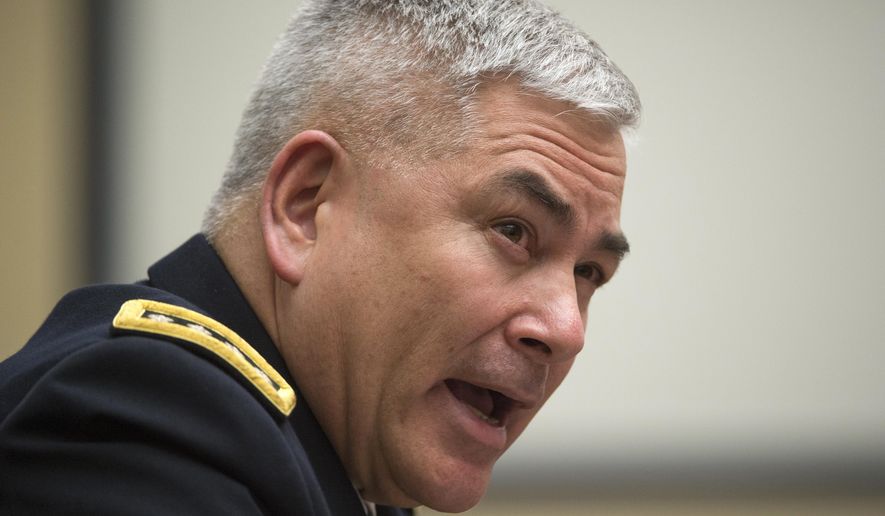WASHINGTON (AP) — The senior U.S. commander in Afghanistan says if the American troop level is cut to 5,500 as President Barack Obama has proposed, there will be too few left to train the still-fledgling Afghan security forces.
Army Gen. John F. Campbell’s assessment underscores the risks of Obama’s longstanding goal of ending the war before he leaves office in January 2017.
The president’s critics said leaving the Afghans without enough American military trainers would imperil the gains made since 2002, when the U.S. committed to rebuilding the country. Nearly $64 billion has been allotted so far for building up the Afghan army and police.
“Fifty-five hundred militarily will not allow you to do what you need to do,” Sen. Lindsey Graham, a South Carolina Republican who is a member of the Senate Armed Services Committee, said Wednesday. “It puts the whole mission at risk.”
Yet patience among other lawmakers is fraying with the finish line so far away. The Afghans won’t be able to independently sustain their security forces until 2024, according to Campbell.
Campbell, who is expected to retire soon, is scheduled to testify Thursday before the Senate Armed Services Committee.
He appeared Tuesday before the House Armed Services Committee and described the Afghan security forces as becoming increasingly competent. Yet significant hurdles remain and “persistent” training and advising is required to overcome them, he said.
The challenges facing the Afghans are largely structural, such as building an adequate air force, gathering intelligence, maintaining warfighting equipment, budgeting and personnel management. As an example of how time consuming this all can be, Campbell pointed to the effort required to recruit and train military pilots.
“You’ve got to start that now and make sure they realize if you recruit a guy now, you’re not going to see him for another three years before he can be a pilot,” he said.
Initially, Obama said he would reduce the U.S. force in Afghanistan to 5,500 troops by the end of last year, and then down to 1,000 by the end of 2016. But Obama backtracked in October, saying the situation remained too fragile for such a rapid withdrawal.
The current U.S. force of about 9,800 would stay in place through most of 2016 to perform counterterrorism missions and to train and advise the Afghan forces, Obama said during remarks from the Roosevelt Room in the White House. The reduction to 5,500 would occur “by the end of 2016,” Obama said, although he didn’t specify exactly when. The smaller force would still be expected to handle the dual-pronged mission.
During an exchange with Rep. Jim Bridenstine, an Oklahoma Republican, Campbell said a force of 5,500 would be focused on conducting counterterrorism operations.
“So we won’t be able to do (the training mission) at those numbers?” Bridenstine asked. “We’ll have a very limited ability to do (training) with 5,500 number,” Campbell responded.
Sen. Thom Tillis, a North Carolina Republican and a member of the Armed Services Committee, said Wednesday that a reduction would do more than undercut the training mission.
“We’re missing an enormous opportunity to continue to stabilize the region but also to … gain intelligence against people who are planning attacks,” Tillis said. “I think we’re at the low-water mark where we are today.”
But frustration over the uncertainty of when the mission will end was evident at Tuesday’s hearing in the House.
Rep. Jackie Speier, a California Democrat, asked whether Americans should accept the fact that U.S. forces will be in Afghanistan permanently, much like they are in South Korea.
Campbell said the U.S. presence in Afghanistan is nowhere close to what it was in Korea. But he also noted the benefits of having American troops stationed overseas.
“It’s going to continue to be a dangerous world for the rest of our lives,” Campbell said. “We have to do everything we can to build up capability for countries, like Afghanistan, to help us in that fight. And they want to do that.”




Please read our comment policy before commenting.